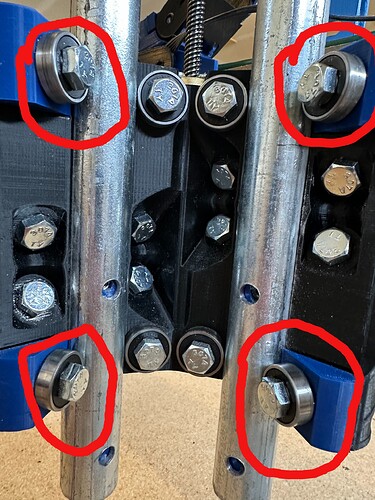My Z axis has started binding. At first it was only in the -Z direction but now it’s binding in both directions. When it first started, I thought I needed to adjust the bolts/bearings on the base and I did that which seemed to help for a while. I haven’t used the CNC for a while and when I tried to use it yesterday, it was even worse than before. Could it be because of the cold and the parts contracting some with the weather change? I did make sure the lead screw was well lubricated, so that’s not the issue. Any thoughts or suggestions? It does seem more prevalent when using a lightweight tool such as a pen tool.
Try moving the lead screw by hand with the machine powered off. See if you can feel where it is binding at and get a better idea of exactly what is causing it. Look for cracked parts real well too. My first thought was one you already said you had checked (lube) so check everything else well. Also if the Z stepper is skipping when it binds, double check your wiring and make sure you don’t have a break somewhere that’s opening the connection to one of the coils on the stepper at a certain spot.
If you ever move steppers manually while the machine is off, go SLOWLY. The steppers are generators.
If you move them too fast (or you unbind the screws and suddenly an axis drops) that can cause issues for the stepper drivers and controller.
I have several blown controllers on my workbench waiting for me to get around to fixing them.
Thanks, I’ll give that a try.
Great advice, thanks!
I’m looking at the assembly instructions again and I think I need to revisit the lead screw nut. Is there ever a time when you would install all 4 screws? The instructions say to use 2.
Well, I figured it out and it was none of the above. After fooling around with it as much as I cared to in the cold garage, I pondered it and thought that it’s possible that the conduit for the Z axis is mis-aligned. So I went out with my calipers and checked and sure enough, the top was more than 1mm wider than the bottom. So I adjusted the bearings on the front of the core making the bottom 2 equal tightness but not especially tight and then tightened the top 2 evenly about an additional 1/4 turn. And that did the trick!
